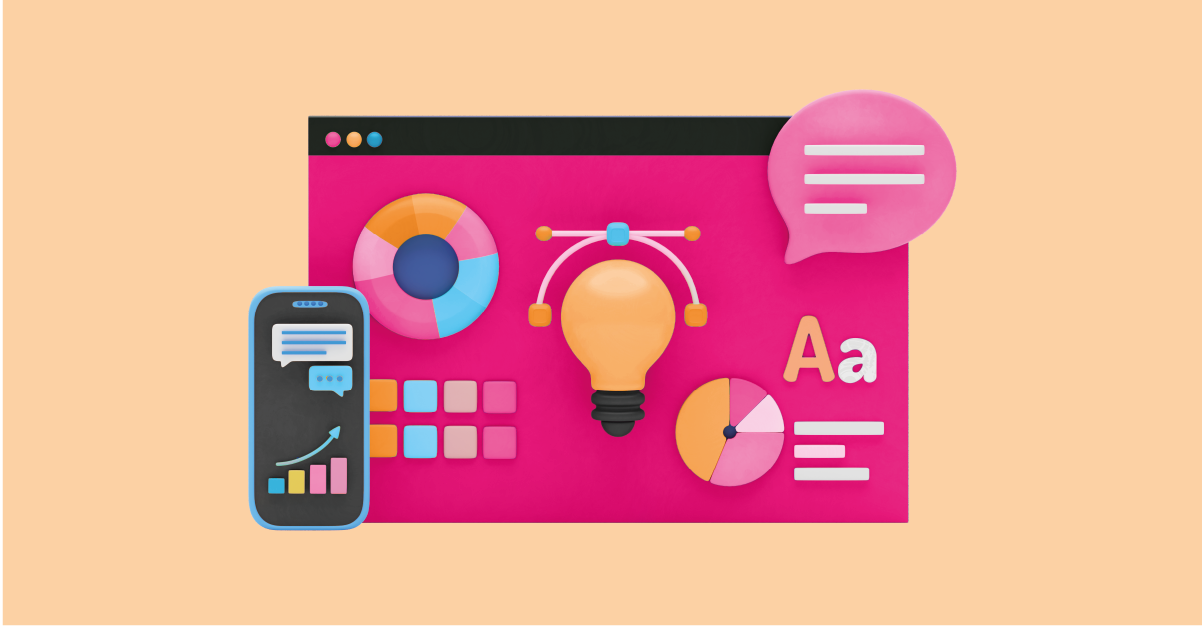In today’s fast-paced digital world, staying ahead of the curve is more crucial than ever. But how do you keep up with the constant stream of information bombarding your business? Enter media intelligence tools—a revolutionary solution that helps organizations sift through the noise and extract valuable insights. Whether you’re a seasoned marketer or a business owner looking to make data-driven decisions, understanding these tools is key to navigating the complex media landscape.
Media Intelligence Tools: Your Key to Strategic Insights

The Evolution of Media Intelligence
The journey from traditional media monitoring to modern media intelligence tools is nothing short of remarkable. Gone are the days when businesses relied solely on manual tracking of news clippings and broadcast mentions. The digital age has ushered in a new era where media intelligence tools offer real-time data, providing a comprehensive view of brand performance across various channels.
1. From Traditional Media Monitoring to Modern Tools
Back in the day, monitoring media meant physically clipping newspapers and manually recording broadcast mentions. Fast forward to today, and we have tools that can track millions of sources in real time, providing instant insights.
2. The Rise of Digital Media
With the advent of social media, blogs, and online news outlets, the media landscape has expanded exponentially. This digital explosion has made traditional methods of media monitoring obsolete, paving the way for advanced media intelligence tools.
Key Features of Media Intelligence Tools
Media intelligence tools come packed with features designed to provide a 360-degree view of your brand’s media presence. Here are some of the key functionalities that make these tools indispensable:
1. Real-Time Monitoring
Imagine having a tool that alerts you the moment your brand is mentioned online. Real-time monitoring allows businesses to stay on top of conversations as they happen, enabling quick responses to both opportunities and threats.
2. Sentiment Analysis
Not all mentions are created equal. Sentiment analysis helps you understand the tone of the conversation—whether it’s positive, negative, or neutral—so you can gauge public perception and react accordingly.
3. Competitor Analysis
Keeping an eye on the competition is vital in any industry. Media intelligence tools allow you to track your competitors’ media presence, giving you insights into their strategies and helping you stay one step ahead.
4. Influencer Identification
In today’s digital world, influencers hold significant sway over public opinion. These tools can help identify key influencers in your industry, allowing you to build relationships that can amplify your brand’s reach.
How Media Intelligence Tools Work
Understanding how media intelligence tools operate can give you a deeper appreciation of their value. Here’s a breakdown of the process:
1. Data Collection and Aggregation
These tools gather data from a vast array of sources, including social media platforms, news outlets, blogs, and forums. This data is then aggregated into a central dashboard, making it easy to analyze.
2. Analysis and Interpretation
Once the data is collected, the tool uses algorithms to analyze the information. This includes identifying trends, performing sentiment analysis, and detecting patterns that can inform your strategy.
3. Reporting and Visualization
Data is only as valuable as the insights it provides. Media intelligence tools offer detailed reports and visualizations that make it easy to understand and act on the information gathered.
Benefits
The advantages of implementing media intelligence tools in your business strategy are numerous. Here are some of the most significant benefits:
1. Enhanced Decision-Making
With access to real-time data, businesses can make informed decisions that are backed by solid evidence. Whether it’s launching a new product or managing a crisis, media intelligence tools provide the insights needed to make the right move.
2. Crisis Management
In the digital age, crises can escalate quickly. Media intelligence tools allow you to monitor the situation in real time, providing the information needed to respond swiftly and effectively.
3. Improved Marketing Strategies
By understanding how your brand is perceived and how your competitors are performing, you can fine-tune your marketing strategies to better resonate with your target audience.
4. Brand Reputation Management
Your brand’s reputation is one of its most valuable assets. Media intelligence tools help you manage and protect this reputation by keeping you informed of what’s being said about your brand online.
Popular Media Intelligence Tools in the Market
There are several media intelligence tools available, each with its own set of features. Here’s a look at some of the most popular ones:
1. AIM Insights
A comprehensive tool that offers real-time monitoring, sentiment analysis, and influencer identification. AIM Insights is known for its user-friendly interface and powerful analytics capabilities.
2. Meltwater
Meltwater is a robust platform that provides detailed insights into media coverage, helping businesses make data-driven decisions. It also offers competitive analysis and customizable reports.
3. Brandwatch
Brandwatch is another leading tool that excels in social media monitoring and sentiment analysis. It offers a wide range of features that cater to businesses of all sizes.
Choosing the Right Media Intelligence Tool for Your Business
Selecting the right media intelligence tool depends on several factors. Here’s what you should consider:
1. Factors to Consider
Look for a tool that offers the features you need, such as real-time monitoring, sentiment analysis, and reporting capabilities. It’s also important to consider the tool’s ease of use and customer support.
2. Customization and Integration Options
Choose a tool that can be customized to fit your business’s unique needs. Integration with other software, such as CRM systems, can also enhance the tool’s functionality.
3. Budget and ROI Considerations
While media intelligence tools can be a significant investment, it’s essential to consider the potential return on investment. A tool that provides valuable insights can more than pay for itself in the long run.
Challenges
While media intelligence tools offer numerous benefits, they also come with challenges:
1. Data Overload
The sheer volume of data these tools can collect can be overwhelming. It’s crucial to have a clear strategy for filtering and analyzing this data to avoid information overload.
2. Accuracy of Analysis
While algorithms are powerful, they’re not infallible. Ensuring the accuracy of the analysis provided by media intelligence tools is vital for making informed decisions.
3. Privacy Concerns
Collecting and analyzing data from various sources can raise privacy concerns. Businesses must ensure they’re compliant with data protection regulations when using these tools.
The Role of Artificial Intelligence in Media Intelligence
Artificial Intelligence (AI) is playing an increasingly significant role in media intelligence. Here’s how AI is shaping the future of these tools:
1. AI-Powered Insights
AI enables more accurate and detailed insights by processing large volumes of data quickly and efficiently. This allows for more nuanced analysis and better decision-making.
2. Predictive Analytics
AI-driven predictive analytics can help businesses anticipate trends and potential crises before they happen, allowing for proactive management.
3. Automation in Media Monitoring
AI is also automating many aspects of media monitoring, freeing up time for businesses to focus on strategy rather than data collection.
Case Studies
Let’s look at some real-world examples of how businesses have successfully used media intelligence tools:
Case Study 1: Crisis Management in the Retail Industry
A major retail brand used the AIM Insights tool to monitor social media mentions during a product recall. The tool provided real-time insights that allowed the company to respond quickly, minimizing damage to its reputation.
Case Study 2: Enhancing Marketing Strategies in the Tech Sector
A tech company leveraged media intelligence to track competitor activity and customer sentiment. The insights gained helped them refine their marketing strategy, leading to a significant increase in sales.
Future Trends
The media intelligence landscape is constantly evolving. Here are some trends to watch:
1. Emerging Technologies
New technologies, such as machine learning and natural language processing, are making media intelligence tools more powerful and efficient.
2. The Impact of Social Media Platforms
As social media platforms continue to grow, their role in media intelligence will become even more critical. Tools that can effectively monitor and analyze social media will be essential.
3. Future Predictions
The future of media intelligence lies in even greater integration with AI, leading to more sophisticated tools that offer deeper insights and more accurate predictions.
Media Intelligence Tools for Different Industries
Different industries have unique needs when it comes to media intelligence. Here’s how these tools can be tailored:
1. Tailored Solutions for PR and Marketing
In PR and marketing, media intelligence tools can help monitor brand perception, track campaign performance, and manage crises.
2. Applications in Finance
In the finance sector, media intelligence tools are invaluable for tracking market sentiment, monitoring news that could impact stock prices, and managing the reputation of financial institutions. These tools can help analysts and investors stay informed about industry trends and make more accurate predictions.
3. Applications in Healthcare
Healthcare organizations can use media intelligence to monitor public opinion about health issues, track the spread of misinformation, and manage their reputation. These tools are also useful in crises, such as during a public health emergency, by providing real-time data that can inform communication strategies.
4. Applications in Retail
Retail businesses can leverage media intelligence to understand consumer preferences, monitor competitor activity, and track the success of marketing campaigns. By staying on top of trends and consumer sentiment, retailers can better align their strategies with market demands.
Tips for Maximizing the Value of Media Intelligence Tools
To get the most out of your media intelligence tools, consider the following best practices:
1. Best Practices
- Set Clear Objectives: Before implementing a media intelligence tool, define what you want to achieve. Whether it’s improving brand reputation, monitoring competitors, or enhancing marketing strategies, having clear goals will help you focus your efforts.
- Regularly Update Your Strategy: The media landscape is constantly changing, so it’s important to regularly review and update your media intelligence strategy. This ensures that you’re always aligned with current trends and market conditions.
- Leverage All Features: Make sure you’re using all the features your media intelligence tool offers. Many tools come with advanced capabilities that can provide deeper insights if utilized correctly.
2. Regular Updates and Training
Stay updated with the latest features and updates from your media intelligence tool provider. Regular training for your team can ensure everyone is on the same page and making the most of the tool’s capabilities.
3. Collaboration Across Teams
Media intelligence should not be siloed. Encourage collaboration between different departments, such as PR, marketing, and customer service, to ensure that insights are shared and strategies are aligned.
Conclusion
In a world where information is power, media intelligence tools have become indispensable for businesses looking to stay ahead. These tools offer a wealth of insights that can enhance decision-making, protect brand reputation, and drive business success. By choosing the right tool, understanding its features, and implementing it effectively, you can unlock the full potential of media intelligence and keep your business on the cutting edge.
To see how media intelligence tools can transform your business, request a demo from AIM Technologies today. Experience firsthand how our tool can provide the insights you need to stay ahead of the competition and make informed, strategic decisions.
FAQs
What Are Media Intelligence Tools?
- Media intelligence tools are software platforms that help businesses monitor, analyze, and interpret media content from various sources, including social media, news outlets, blogs, and forums.
How Can They Benefit My Business?
- These tools can provide valuable insights into brand perception, competitor activity, and market trends, enabling better decision-making and more effective marketing strategies.
Are These Tools Suitable for Small Businesses?
- Yes, media intelligence tools are scalable and can be tailored to fit the needs and budgets of small businesses, offering them the same competitive advantages as larger organizations.
How Do I Choose the Right Tool?
- When choosing a media intelligence tool, consider factors such as the features offered, ease of use, customization options, and cost. It’s also important to choose a tool that can integrate with your existing systems.
What Are the Costs Involved?
- The cost of media intelligence tools can vary widely depending on the features and level of service provided. It’s important to consider the return on investment (ROI) when evaluating the cost, as the insights gained can lead to significant business benefits.





